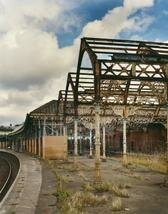Heritage at Risk
What is Heritage at Risk?
The first edition of our new annual Heritage at Risk Register was published in July 2008. Previously the survey was confined to an assessment of the state of the country’s approximately 30,000 grade I and II* listed buildings (plus Grade II listed buildings in London) but now the Heritage at Risk survey has been extended to include:
- Scheduled monuments
- Registered parks and gardens
- Registered battlefields
- Protected wreck sites
- Conservation areas
In parallel, local authorities will be encouraged to include details of nationally and locally designated assets at risk in their own Historic Environment Records, so that they may in turn publish their own Heritage at Risk registers.
From now on, our understanding and our ability to respond will improve year-by-year as we establish baselines, collect information about the other asset types and study the trends.
In 2010 we launched 'Caring for Places of Worship' part of the Heritage at Risk programme we carried out a sample survey to find out how many places of worship are 'at risk' from serious disrepair – the results of which are published here. We talked to congregations across the country who care for places of worship, to find out what challenges they are facing. We are currently expertly moderating the results of the initial sample survey and those listed places of worship that are assessed as being 'at risk' will be added to the 2011 Heritage at Risk Register.
What is to be done?
There is no catch-all solution. Different assets have differing needs. A 17th-century warship off the Cornish coast requires a different remedy from that needed by the late 1950s block of flats in the East End of London. However, there are some common themes:
- All historic assets benefit from sound management and from informed planning policies
- If public and private owners are to play their part in conserving the best of the past for the future, it is vital that those owners have access to all the encouragement and practical guidance they need, including advice about targeted programmes of grant aid for which they may be eligible
- A proportion of buildings at risk, along with some threatened monuments, landscapes and wreck sites do require significant public resources to allow major repairs, stabilise their condition, or change the way in which the land is being used
- Some assets cannot be reused and the high cost of full repair is not always justifiable. For such structures and sites, the only long-term solution is one of managed decline once the historic significance of the asset has been carefully recorded.
English Heritage is committed to securing a reduction in the number of heritage assets at risk, focusing first on site on the Heritage at Risk Register.
Investing in England's heritage at risk
English Heritage has resources available to address some of the issues revealed by this review. However, our annual investment in sites outside of English Heritage care amounts to no more than around £25m per year.
Our current investment policy gives priority to heritage assets at risk whilst also insisting on value for money. This will increasingly mean that our funds support ancillary activities, such as development proposals, and that major repair grants will necessarily be limited. However, we are keen to bring our expertise to bear early in the process: that way we will be certain that our response is appropriate.
In exceptional circumstances and when it is clear that all other avenues have been explored, English Heritage will direct a part of these resources to historic assets that can only be dealt with by our own actions. We will buy them, reduce the risk by repairs, investigation and any other appropriate activities, with a view to selling them on for development by others.

